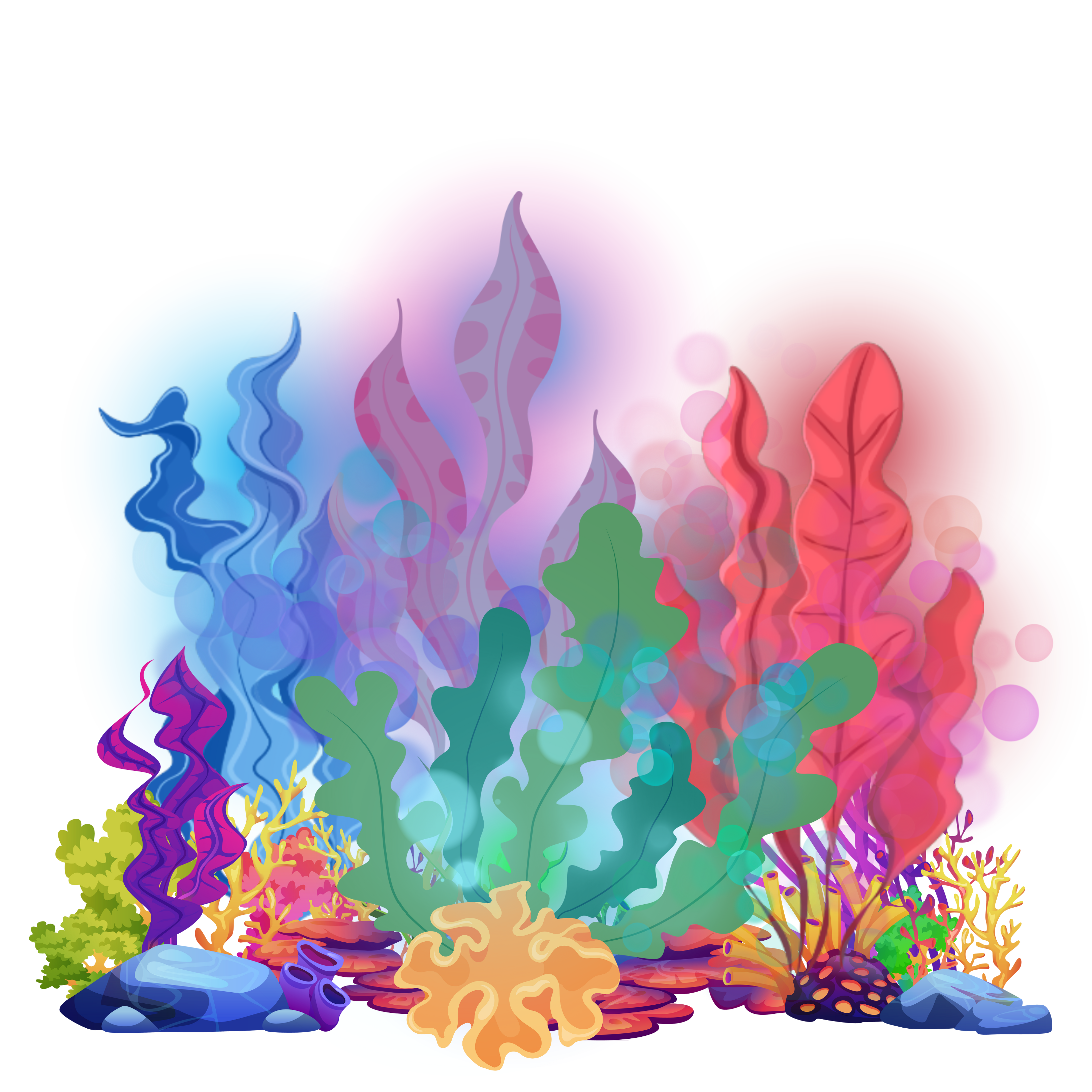Lumikelp
Lumikelp makes modern long-distance communication possible! It gives us ink, the remains are turned into paper, and lightly salted and raosted it's quite tasty, too. At the harvest, children like to eat it raw and run around all night with ghastly glowing grins, calling each other guardians!
Lumikelp is the colloquial term for a species of seaweed characterized by its bioluminescent glow and ability to provide visual signals to nearby sea life, warning of tidal conditions, nearby predators, and other disturbances that might prove hazardous.
Basic Information
Genetics and Reproduction
Lumikelp releases microscopic beads of spore mucus. These sticky globs adhere to the fish that use the lumikelp as shelter from predators, and are shed whenever the fish molts, using the scale to which they are attached as fertilizer for their initial spawning.
Additional Information
Uses, Products & Exploitation
Lumikelp sap is the critical ingredient in tele-ink, and the remaining plant pulp is made into the special tele-paper that allows long-distance text communications.
Geographic Origin and Distribution
Lumikelp grows in all of Argentii's salt water, and is not bothered by different temperatures or light cycles.
Perception and Sensory Capabilities
Lumikelp is extremely sensative to tides and currents. Disturbances within a meter will cause them to react brightly, while disturbances as far away as three meters will cause them to react in a more subtle change. Likewise, the pattern on their leaves and stems will change in different ways based on the nature of the disturbance. Storm surges look different from swimming predators, and those both look quite different from the patterns caused by the wake of a boat.
It is worth noting that physical contact with lumikelp does not cause it to react, only changes in the currency of the water around it. This is a curious fact for which there is not yet an explanation, but which is continuing to be studied.
Symbiotic and Parasitic organisms
Many different species of sea creatures have developed an awareness and interpretation of lumikelp's different glow patterns. They rely on it to warn them of predators in nearby water.
Several sub-species of lumikelp are distinguished only by their leaf shape and color, lending variation to the colors of ink they can be blended to produce.










I like how you not only included a form of communication for the lumikelp to communicate, via it's change of color, but how it provides an additional form of communication by being the material that people use to make tele-ink and tele-paper. It's like two in one!
Thank you! One of the things I'm noticing about my world is that because it's very geographically divided (the main continent is a diaspora of islands), a lot of the ocean life has evolved to fill in a bunch of different gaps that are left by the very specifically evolved landbound ecosystems. I think, eventually, when I start exploring them, the swamplands along the southern portion of Capitalla are going to play a huge part as well. And, if all goes according to plan with the Orbshroom, Tilth will, eventually, become an entire swampland island! LOL
Haly, the Moonlight Bard
Rhapsody by Moonlight , a daily email worldbuilding newsletter.